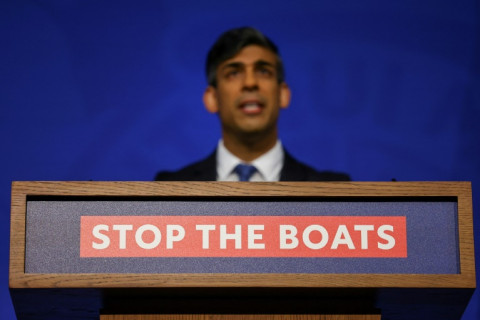SETL's Peter Randall says banks and blockchains are all about payments

Peter Randall has some form when it comes to building and integrating new trading technologies. He turned Chi-X, the fast and nimble multilateral trading facility, into the fifth largest equities market in Europe.
Now Randall and Anthony Culligan, founder of peer-to-peer bitcoin trading site Roolo, have launched SETL, which will use blockchain technology to transform the post trade space the way Chi-X transformed the trading space.
SETL is a permissioned ledger system that aims to be as palatable to top-tier banks as possible, with a view to moving cash and assets immediately and achieving settlement finality of transactions.
There are a variety of distributed ledger offerings designed with the banking industry in mind: it's becoming a busy space.
Ripple's token-based system is next after Bitcoin in terms of market cap, and comes with an algorithm to help create cheaper secondary markets supplying the collateral eaten up by correspondent banking.
Recently, Patrick Byrne, CEO of US online retailer Overstock.com, launched tØ, which uses a Preborrow Assured Token, and which touts the "trade as the settlement", rather than these being two separate processes.
New York Bitcoin exchange itBit recently released details of its secretive Bankchain project, which is permissioned, token based, invite only and wants to leverage its owners' contacts on Wall Street.
Ethereum fork, Eris Industries is certainly looking to consult with banks on its technology, but says its focus goes beyond mere transactions and into the realm of data rich smart contracts.
Digital Asset Holdings' Hyperledger is looking to solve trading latency issues and comes with Wall Street heavyweight Blythe Masters, and an advisory board that includes some of the top brains in blockchain technology. That said, it's written in weird Erlang, which is good when it comes to scaling but about as interoperable as Swedish.
Randall's priority is that the SETL blockchain system runs alongside and can be integrated into existing systems. "We are not looking to ideologically throw everything out and start again, and burn the data centres and torch the procedures manuals and all the rest of it," he said.
"We are saying it's all got to fit with your existing Swiftnet gateways and networks, your existing procedures. It's got to fit with your general ledger.
"How else is it going to be audited?"
Radall can envisage the co-existence of a UBS chain and a Deutsche Bank chain and a Morgan Stanley chain and a JP Morgan chain and so on.
"I would contend that although that could be beneficial to the institution and its customers internally, it does nothing to solve the problems between institutions. It's got to interoperate.
"And nobody is going to want to interoperate using UBS coin, or using Deutsche coin - the only thing they are prepared to accept is clear balances at the Bank of England or the European Central Bank or the Fed.
"That's the only thing that will produce settlement finality within the international financial system.
"So anybody that offers something different, for example like Ripple - Ripple moves everything around and it all looks really whizz-bang – but at the end of day, when you finally have to make those payments, for those assets, you have to come out of Ripple and execute a Fed wire transaction.
"The cleverest people in the world can put together something that does credit derivatives on a blockchain. It may be very interesting but nobody is going to adopt their system if it can't do payments."
Once a blockchain system can transfer assets and achieve settlement finality, a spectrum of possibilities opens up, said Randall.
"You can do FX, you can do non-DVP securities like bonds, you can do equities in due course, you can certainly do derivatives in due course."
There are plenty of economic and technological arguments in favour of distributed ledger systems; the world's financial systems are in need of upgrading.
Around £60bn is removed from the tier one capital of 20 or so big UK banks every morning to fund system specific assets. This money, deposited in to Crest accounts, Chaps accounts and CLS accounts, is tied up all day doing nothing except waiting to fund receivables and payables.
"How would it be if you could release some of that capital back to the bank, to the treasurer, to do more useful work with?" said Randall.
Banks have now got their arms around the regulatory compliance capital requirements that followed the banking collapse. To do this they have hired a lot of expensive compliance officers.
In addition, financial institutions have been forced to exit many profitable business lines. Capital has become so scarce that corporate treasurers no longer allow banks to have capital tied up in bonds, for instance.
The management of banks are now looking for growth, innovation, new products, and also for places they can cut costs.
Blockchain can reputedly deliver in these areas. Randall makes the point that identity and capacity within a blockchain system are usefully related.
"If you make the assumption that the nodes are actually basically benevolent to each other, which they are of course if you have got identity attached to it, then the type of cryptography and therefore the time it takes gets a lot easier.
"And if you are not talking in the tens of thousands per second, and possibly hundreds of thousands per second, in terms of transactions for financial services globally, you are crazy."
Randall is in talks with big banks at this time. Chi-X Europe was owned by a consortium of major players that included Citigroup, Goldman Sachs, UBS, Nomura, Merrill Lynch and Morgan Stanley.
"What we can say is we are looking to raise money. We are looking to get between £20m and £25m. And we are looking for partners to join us," he said.
© Copyright IBTimes 2024. All rights reserved.






